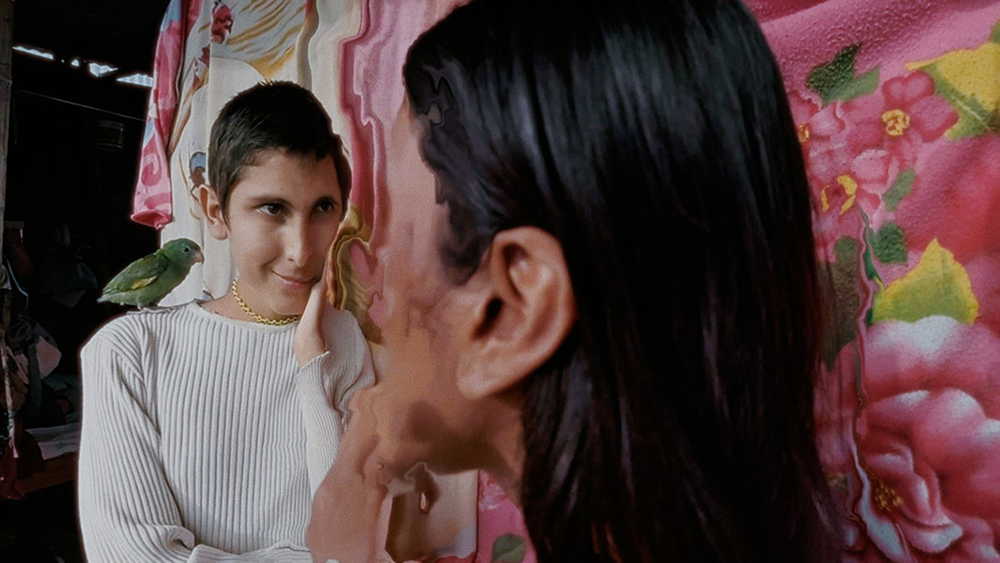
Mankind is barreling further into an age of climate disaster, but whether it has the speaking vocabulary, much less a cinematic one, to accurately interpret its rapidly changing environment is another matter. With his astonishing new experimental feature, “The Human Surge 3,” Argentine filmmaker Eduardo Williams proposes a new analogue for the sensation of modern living: It’s kind of like seeing panoramas shot with a 360-degree camera, navigated via a VR headset and then translated back to a traditional cinematic frame, completely and utterly distorting the imagery in the process. If that all sounds like a discombobulating experience, it is. It’s also a uniquely rewarding one.
Prospective viewers should at least be familiar with the first “Human Surge” before experiencing Williams’ continuation. As an art-house in-joke, the title of Williams’ new sort-of-documentary, sort-of-funhouse-mirror-maze skips straight to threequel status. There is no “The Human Surge 2.” It’s a comical touch that clues into the film’s playful disorientations, jumping around different areas of the world with little introduction or clarification.
Across the various friend groups featured in “The Human Surge 3,” no individual appears to be older than 30. There’s an impression of an endless summer, with riverside lazing, flirty conversations and an excursion to a pounding rave — a focus on youth that’s key to Williams’ forward-looking contemplations, while also offering some coziness to complement an eerie ambiance.
Williams found his actors by meeting locals and distributing flyers in Sri Lanka, Taiwan and Peru. The settings may be disparate, but the film constantly slips between them, blurring the three into one gloomy jungle. Murmurs of Tamil, Mandarin Chinese and Spanish overlap in the soundscape and an overcast sky hovers above each sequence
It’s worth reiterating: This all looks bananas. Williams’ unorthodox handling of extensive virtual-reality recordings renders his film an unabating abstract. Terrain rises like bread beneath humans, and the sky seems to swallow up the landscape. The effect is especially overwhelming whenever the camera wanders into civilization, with small bedrooms and village architecture bent in sudden, sharp contortions. “Existing is exhausting,” one person is heard muttering at one point — probably the closest that the film comes to an explicit sentiment for itself.
“The Human Surge 3” doesn’t have defined characters or even very coherent conversations, but its swirling of reality conjures an absorbing dreamscape. And patterns do begin to emerge, like a prominence of blossoming queer relationships or a strange, haunting epidemic of humans suddenly becoming unconscious and dropping to the ground.
In reaching for the cerebral, “The Human Surge 3” doesn’t traffic in specifics. That’s a liberating quality for a feature composed of flowing, transforming aesthetic textures, but it also limits the experiment. It’s much more ponderous than the first “Human Surge,” which placed internet-age despair directly in its crosshairs with motifs such as webcam spectacle, dead-end jobs and computer factories. Williams’ follow-up is comparatively open-ended. Though it provides itself the space to wander and arrive at new insights, the detachment can sometimes come across as a restraint that betrays an overall adventurous spirit.
It takes some patience, but “The Human Surge 3” fully delivers on its inventions with a bona fide climax — an unbroken shot featuring characters climbing up a mountain, trudging above the clouds that have blanketed each scene thus far. Uniting an ensemble hand-picked from across the globe, the film grows beyond its eeriness and reaches for the otherworldly. The characters move as if they’re being summoned by a higher authority, like the everyday people helplessly drawn to aliens in “Close Encounters of the Third Kind” or, more pessimistically, the group of newfound companions that form a macabre cha-cha line behind Death in “The Seventh Seal.” As Spielberg and Bergman and hundreds more filmmakers have invented stages to wrestle with existential angst, Williams mounts his own eccentric production. There are no UFOs or chess games with the Grim Reaper, but his audacious formal approach transforms the world into a spectacle all its own.













